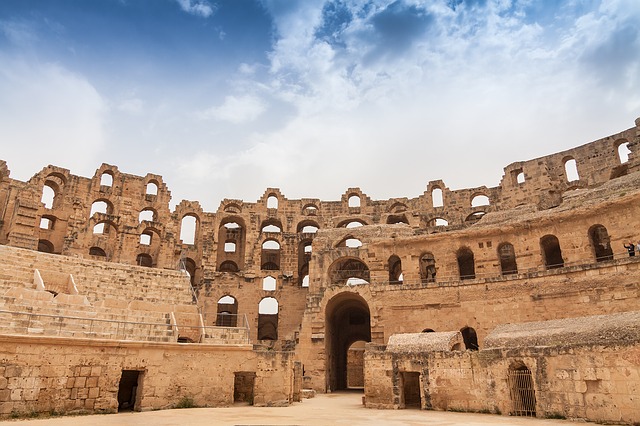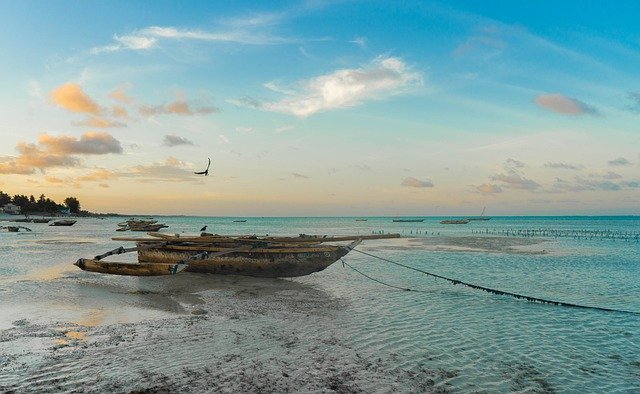There are hundreds of UNESCO World Heritage Sites around the world. These are so crucial to our society that they are preserved for future generations to enjoy. There are 89 heritage sites in Africa where you can visit some of the most fascinating and fascinating places in the world.
Some are as popular as the Great Pyramids of Egypt, while others are less spectacular. Here are 6 Incredible UNESCO World Heritage Sites in Africa.
Ruins of Carthage - Tunisia
About 9 miles from Tunis you will find the ancient UNESCO Carthage site in the mountains above the Mediterranean Sea. In 814 Carthage became a picturesque port city. When marine Phoenician explorers came to the region to start trading. Carthage to the Romans 44 B.C. During and after the reign of Julius Caesar, the Vandals, Byzantines, and finally the Arabs fell into obscurity in the 7th century AD.
The ruins are one of Tunisia's most popular tourist attractions and history buffs will fall in love with museums and excavations in one of the world's most famous port cities. Don’t miss the Roman Amphitheater and Antoine Bath - they are incredible.
Mount Kilimanjaro - Tanzania
Mount Kilimanjaro, the highest point in Africa, boasts of snow-capped peaks above the surrounding plains. The mountain is surrounded by forests and is home to some of the most amazing animals on the continent.
Kilimanjaro climbers are rewarded with stunning views of the surrounding savannah and permanent glaciers and spectacular icebergs. Weather permitting, climbers with general skills and equipment can climb in a matter of hours. There are plenty of great outfits that will carry you through life.
Ancient Thebes - Egypt
If you want to get away from the crowds of Cairo and see real Egyptian history, then head south to Luxor. Luxor was once the capital of ancient Egypt but today it is known as the largest outdoor museum in the world.
Luxor has it all, from Tutankhamun's tomb in the Valley of the Kings to the sunsets at the majestic temple complexes of Luxor and Seti. To see the Nile like a pharaoh, take a Nile ship. A day after visiting the ruins, hold an evening show and sound show at the Karnak Temple.
Timbuktu - Mali
Timbuktu is not just a place where your mother threatens to send you away when you misbehave - it really is a place! Although this ancient city in West Africa has seen its glorious days, between the 13th and 16th centuries, Timbuktu was the greatest place of Islamic scholarship.
This majestic mosque is made of mud and wood and was used to house sacred Muslim books for scholars to study. Timbuktu was also a breeding ground for camels roaming the salt-traded Sahara. At the time, salt was traded for pounds with gold because it was the only way to preserve food. Going to Mali requires some planning, so be sure to invest in an established travel company before you leave.
Cliffs of Bandiagara - Mali
Mali is full of unusual architecture and is home to two great UNESCO websites. The first belongs to Dagon, who lives along with the Bandiyagara Escort. They have built an incredible slope of houses, granaries, altars, and sanctuaries called the "Land of Dogs." This vast region of 289 villages was built in the 15th century. They rise 1000 feet from the slopes and stretch for nearly 100 miles across this ancient land.
The settlements were built as a natural fortress to protect the inhabitants of Dogan, allowing them to preserve centuries-old culture and traditions. If you visit this amazing site be prepared for a trip without modern hotels and facilities, but you will not regret it!
Rock-Hewn Churches of Lalibela - Ethiopia
The remote mountain village of Lalibela, in northern Ethiopia, consists of 11 spectacular medieval churches carved out of a single rock. These mysterious creations have made this mountain town a place of pride and pilgrimage for pilgrims and visitors alike. These churches represent a building tradition used in Ethiopia since the 6th century, But these churches are attributed to King Lalibela who ruled in the 13th century.
The king had a vision of the "New Jerusalem" for Christians who could not worship the Holy Land because of the Muslim conquest throughout North Africa. The best time to go is the festival of Timket in January. It marks Epiphany.







0 Comments